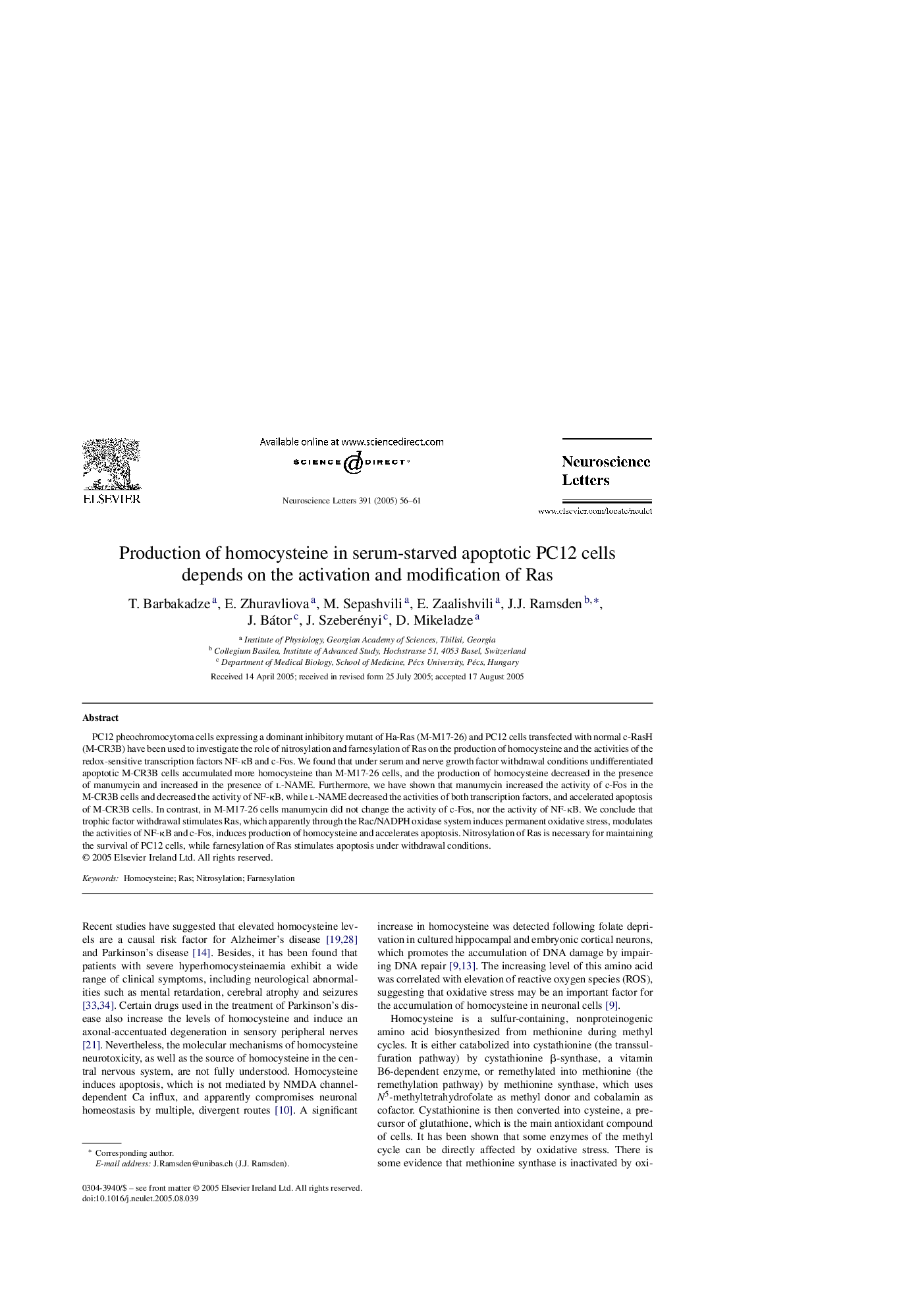| Article ID | Journal | Published Year | Pages | File Type |
|---|---|---|---|---|
| 9428864 | Neuroscience Letters | 2005 | 6 Pages |
Abstract
PC12 pheochromocytoma cells expressing a dominant inhibitory mutant of Ha-Ras (M-M17-26) and PC12 cells transfected with normal c-RasH (M-CR3B) have been used to investigate the role of nitrosylation and farnesylation of Ras on the production of homocysteine and the activities of the redox-sensitive transcription factors NF-κB and c-Fos. We found that under serum and nerve growth factor withdrawal conditions undifferentiated apoptotic M-CR3B cells accumulated more homocysteine than M-M17-26 cells, and the production of homocysteine decreased in the presence of manumycin and increased in the presence of l-NAME. Furthermore, we have shown that manumycin increased the activity of c-Fos in the M-CR3B cells and decreased the activity of NF-κB, while l-NAME decreased the activities of both transcription factors, and accelerated apoptosis of M-CR3B cells. In contrast, in M-M17-26 cells manumycin did not change the activity of c-Fos, nor the activity of NF-κB. We conclude that trophic factor withdrawal stimulates Ras, which apparently through the Rac/NADPH oxidase system induces permanent oxidative stress, modulates the activities of NF-κB and c-Fos, induces production of homocysteine and accelerates apoptosis. Nitrosylation of Ras is necessary for maintaining the survival of PC12 cells, while farnesylation of Ras stimulates apoptosis under withdrawal conditions.
Related Topics
Life Sciences
Neuroscience
Neuroscience (General)
Authors
T. Barbakadze, E. Zhuravliova, M. Sepashvili, E. Zaalishvili, J.J. Ramsden, J. Bátor, J. Szeberényi, D. Mikeladze,
